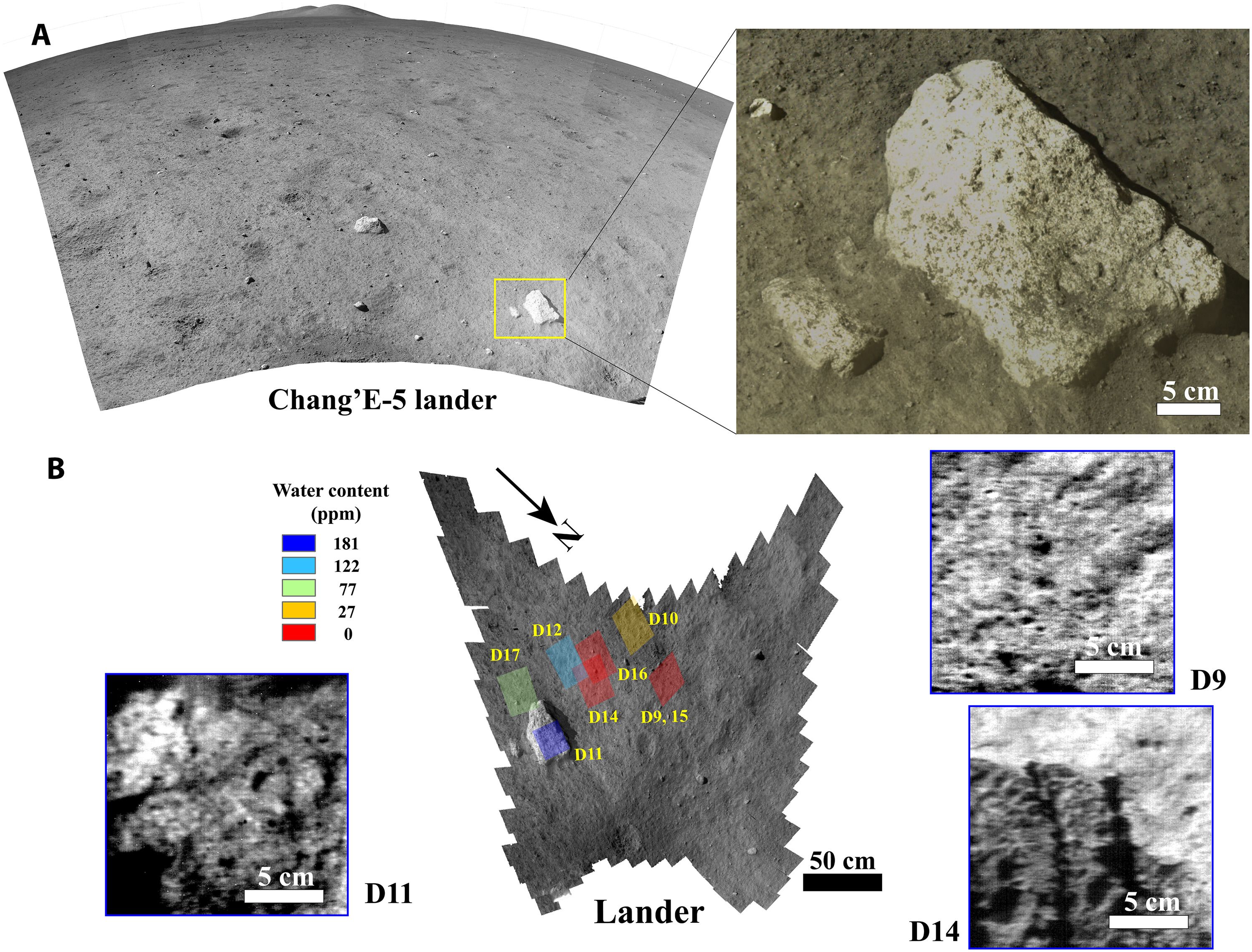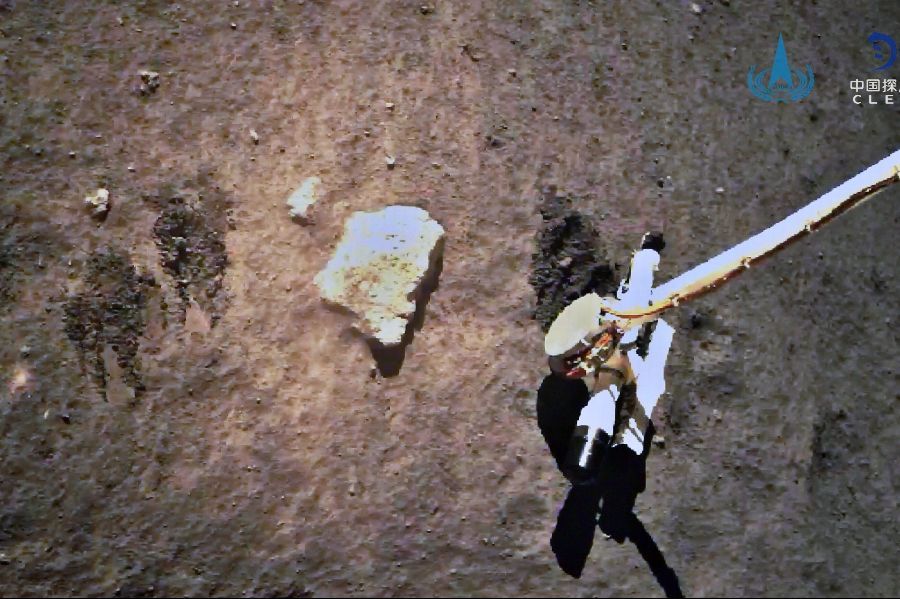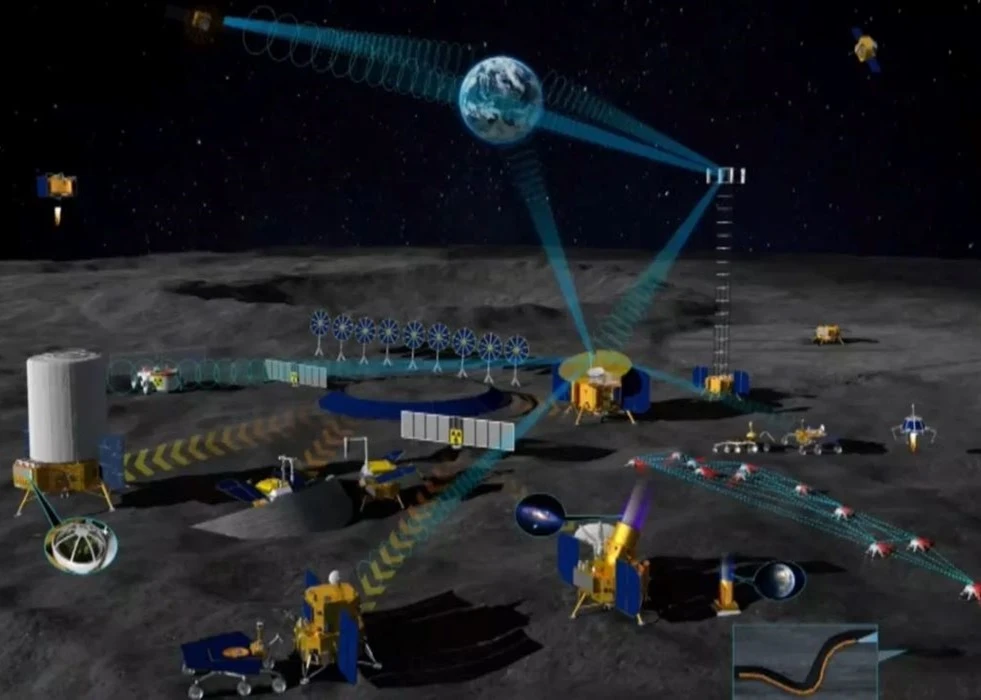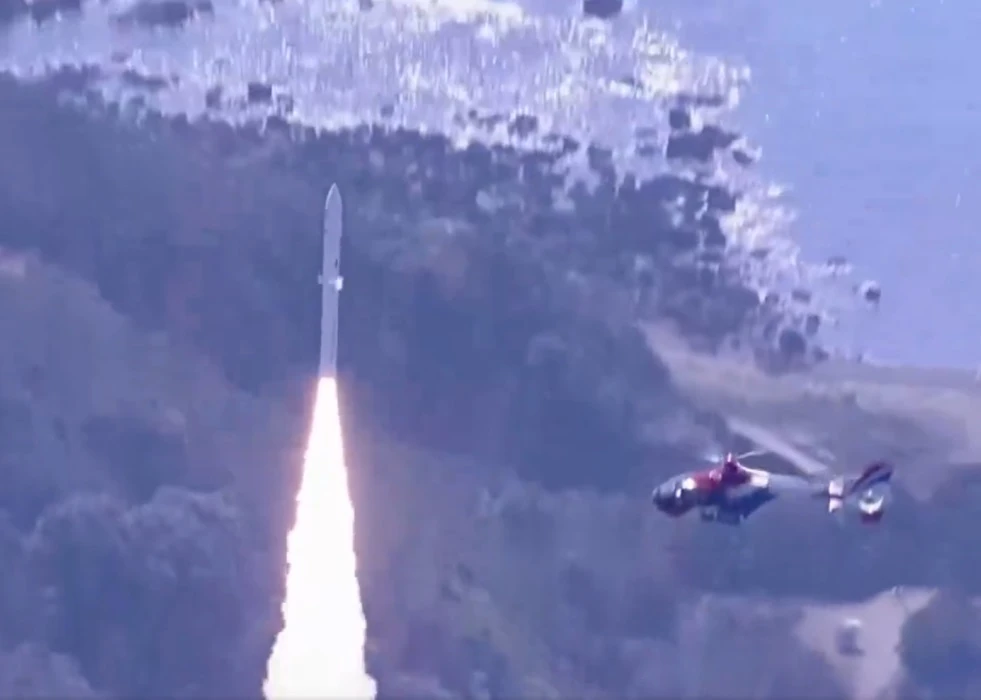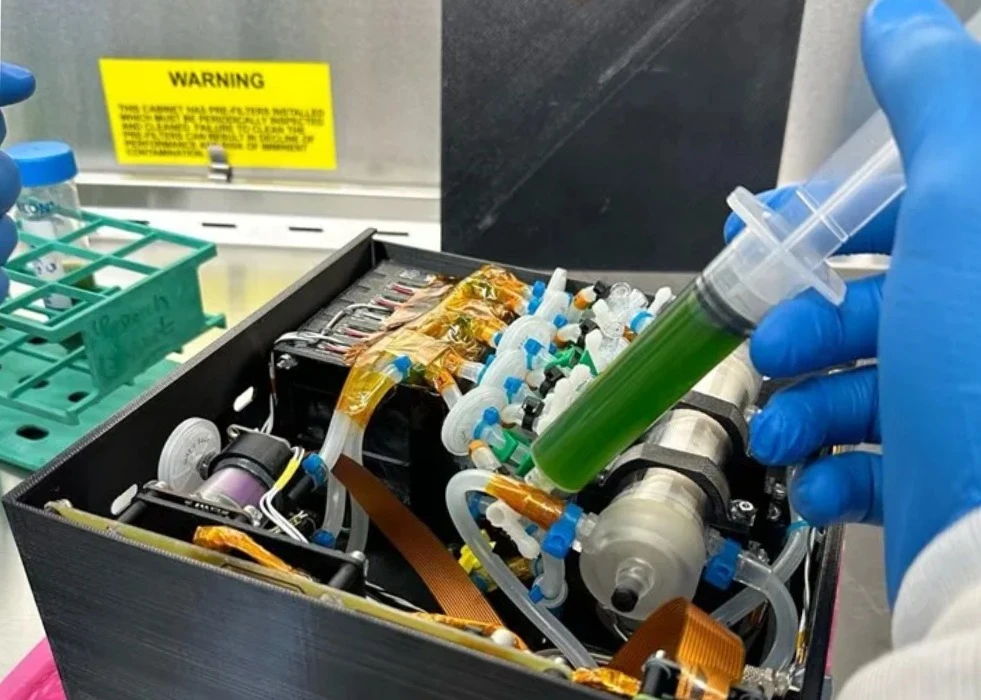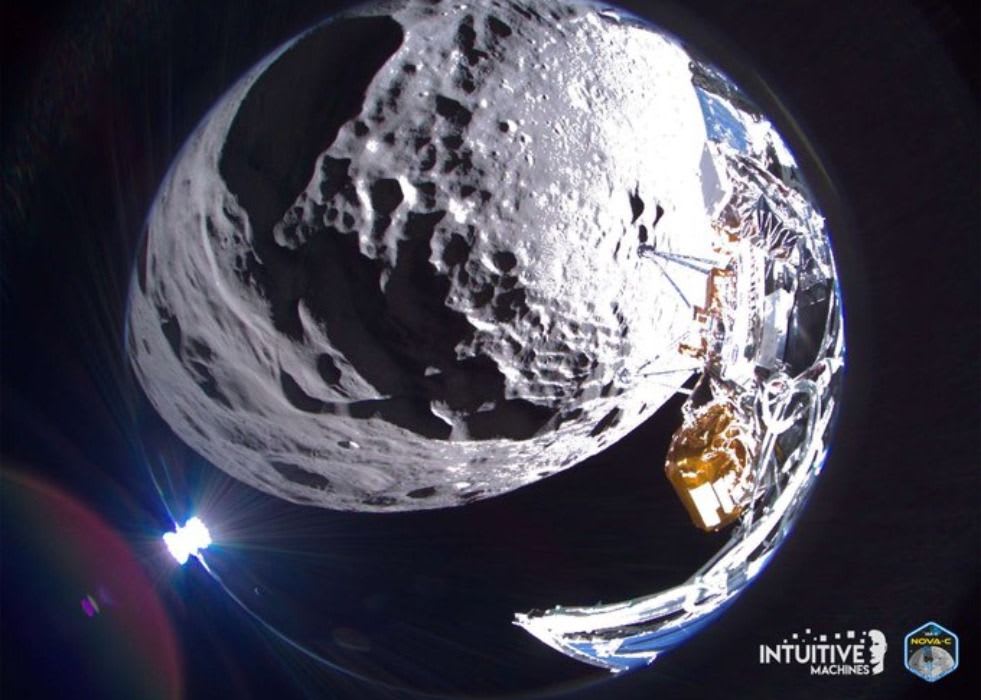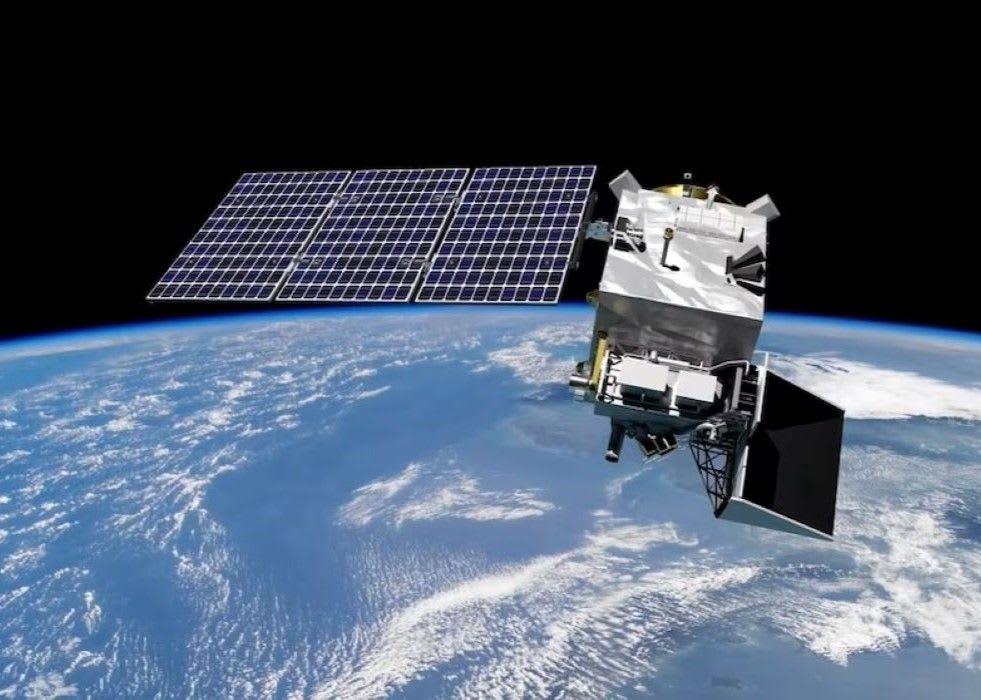Chinese lunar probe Chang’E-5 discovered water on the moon according to scientific research published int “Science Advances”. The scientific report can be summarised as the probe discovered less than 120 ppm water in the lunar soil and about 180 ppm in the rock, which is the equivalent of 120 grams of water in 1 ton of the soil and 180 grams of water in 1 ton of the rock.
The moon had long been thought to be dry. However, scientists have confirmed the presence of water on its surface by remote observation. However, the lander has now detected signs of water in rocks and soil. The report says that the Chang’E-5 probe had landed in Northern Oceanus Procellarum of the Moon on 1 December 2020 and returned world 1.731-kg samples on 17 December 2020. This is the first lunar sample return mission since 1976. The landing site is suggested to be at the youngest known lunar basalts. The lander was equipped with a Lunar Mineralogical Spectrometer (LMS), a Panoramic Camera (PCAM), and a Lunar Penetrating Radar to explore the surface topography, the mineral compositions, and the subsurface structure of the landing area.
Researchers from the National Space Science Centre of CAS, the University of Hawai at Manoa, the Shanghai Institute of Technical Physics of CAS and Nanjing University were also involved.
